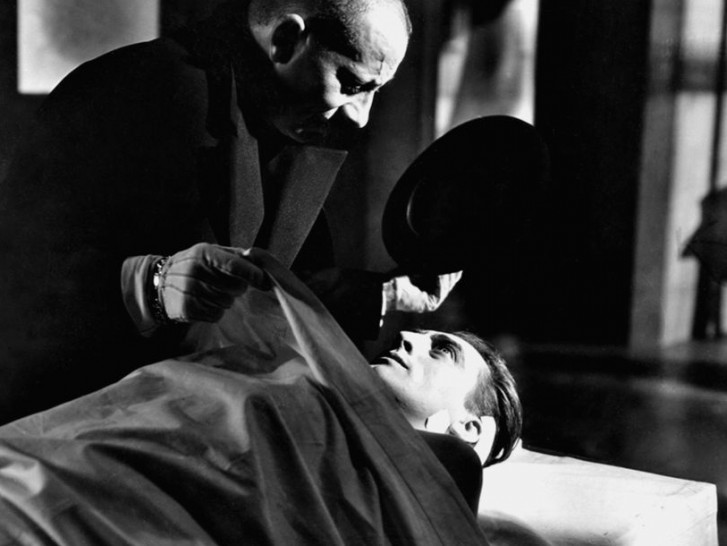
The Man They Could Not Hang
The Crime of Dr. Crespi
Written by Karl Brown, for years a cameraman for D.W. Griffith (he also tried directing, not without success, before settling on writing), and directed by the affable Nick Grinde (who once wrote, “The B director has to know more tricks than Harry Houdini did, and he has to pull them out of his hat right now—not after lunch”), this ingenious and entertaining film is the vehicle for one of Boris Karloff’s best performances. Everything that happens in the film is fun and interesting, and not a moment is wasted. The film ends with an unanswered question hanging in the air; this ending comes, unfortunately, too soon (interrupting Karloff’s plan of serial revenge, which has the full support of every viewer of the film), but in that untimeliness a bleak and awful judgment about the finality of existence is expressed in an ideally dry and succinct way.
Like all B-movies, The Man They Could Not Hang is a commentary on its own production. The newspaper editor instructs his reporter—“Make it weird, make it dramatic, and make it snappy!”—in words Grinde and Brown might have heard in a meeting with the head of their unit. – Chris Fujiwara
After his tragic fall from grace as a visionary but notoriously uncompromising director, Erich von Stroheim transitioned to a prolific-yet-poignant career as an actor who brought a menacing Old World stoicism and indelible presence to his best roles, even in otherwise forgettable B-films. The Viennese-educated Hungarian émigré John H. Auer gave von Stroheim one of his memorable early roles as the titular Dr. Crespi, a venerated surgeon nursing a wounded heart and a festering jealousy of the rival surgeon who stole his girl. The presence of Dwight Frye (Renfield in Browning’s Dracula and Dr. Frankenstein’s assistant in Whale’s iconic adaptation) signals an alignment with the then-popular Gothic-imbued horror films, a connection underscored by the film’s source (one of Edgar Allan Poe’s lesser known buried-alive nightmares). Rather than a dark castle or dungeon, The Crime of Dr. Crespi is set largely within a white-on-white clinic transformed by Expressionist shadows into a dramatic stage for von Stroheim’s fiendish plot to exert a cruel revenge. Auer’s independent production was picked up by the fledgling Republic as its first release and the first of many genre films Auer would direct for the studio.
35mm preservation print courtesy UCLA Film and Television Archive.





































